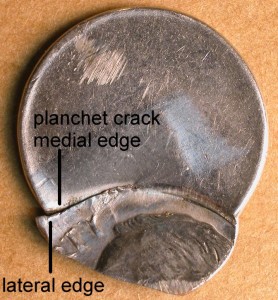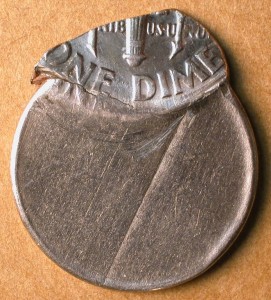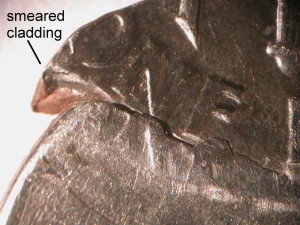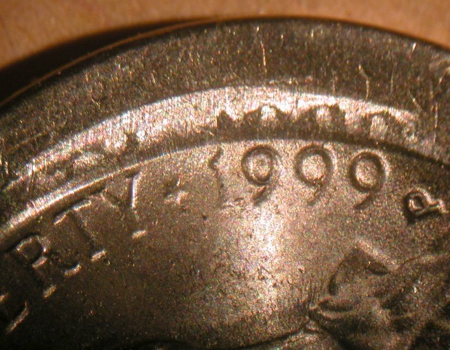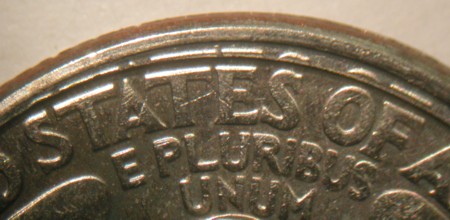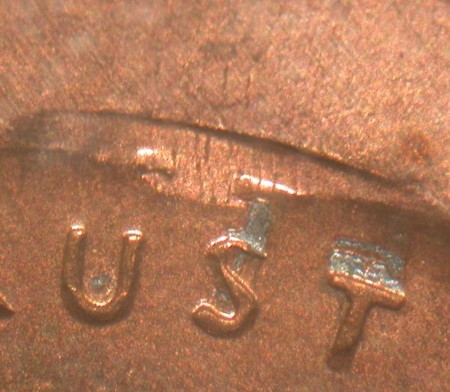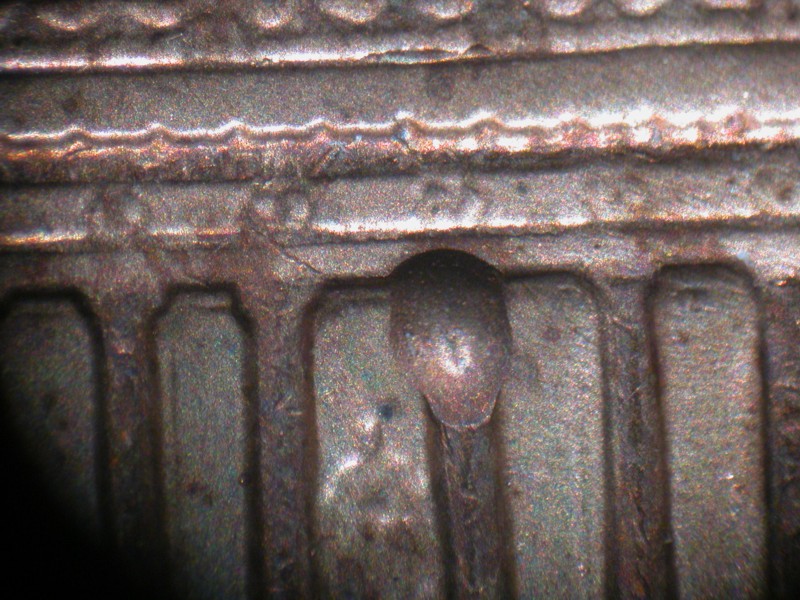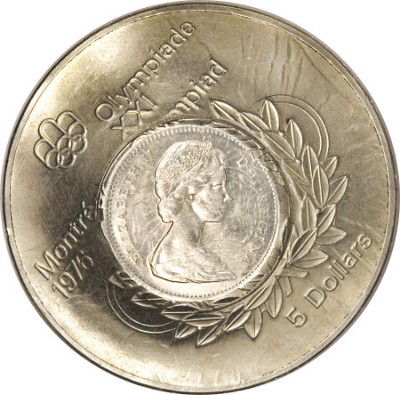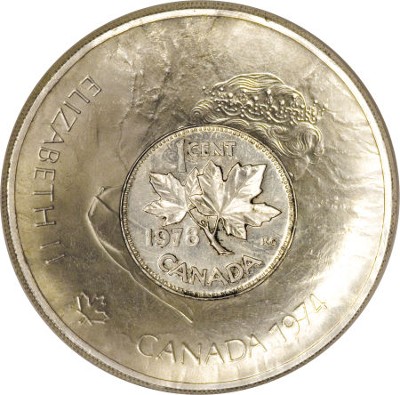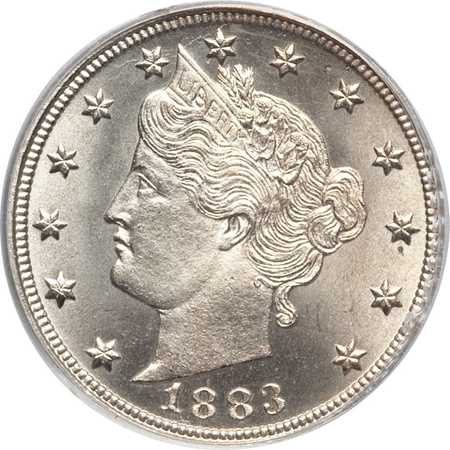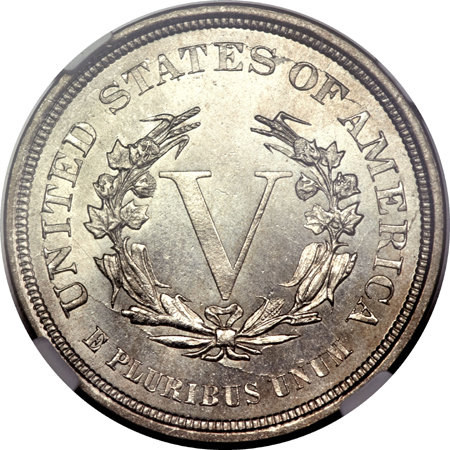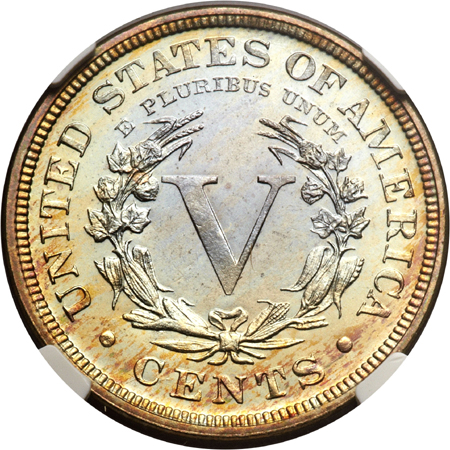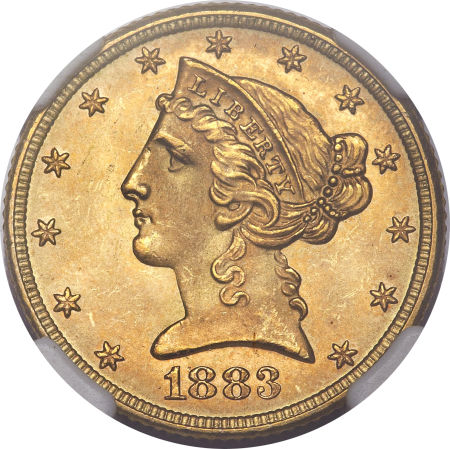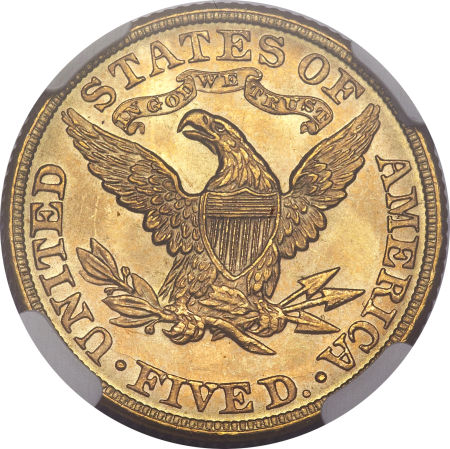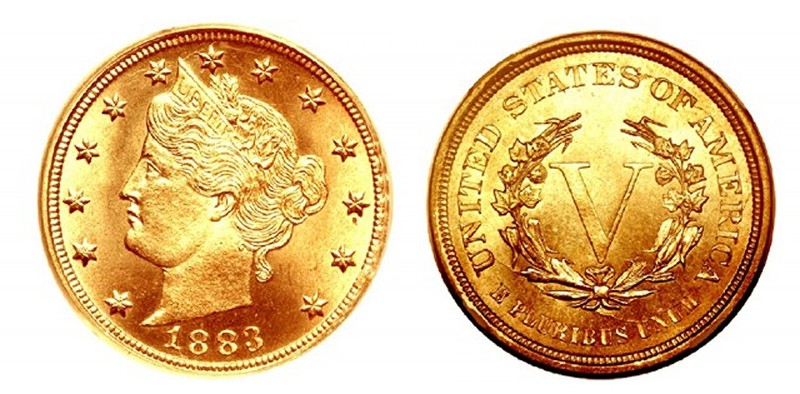Part VI. Striking Errors:
Stutter Strikes:
Type III Stutter Strike
Definition: A stutter strike occurs when the hammer die makes transient contact with a planchet without there being any resistance provided by the anvil die. Resistance is provided by other means. After the initial light contact, the hammer die completes its downstroke in a position medial to the site of original contact. The stutter strike is restricted to a thin outlying crescent that is sharply demarcated from the adjacent complete design. Directly opposite the stutter strike, on the face struck by the anvil die, the original surface of the planchet persists unaltered.
The rarest form of stutter strike is the Type III stutter strike. It occurs when a bent, folded, or crumpled planchet or coin is present in the striking chamber. The deformation of the disc can occur before, during, or between strikes. If the bent disc is rendered unstable while sitting on a flat surface, it can tilt and slide sideways during initial contact with the hammer die. A Type III stutter strike can occur on either face.
A Type III stutter strike can form on the face struck by the hammer die when a severely bent planchet enters the striking chamber or when a bend forms in a coin during an initial strike. The descending hammer die contacts the apex of the bend while the planchet rests on two points at opposite poles. This makes for a very unstable situation. After initial contact, the wobbly planchet slides out of the way, carrying the initial point of contact out beyond the boundaries of the striking chamber. A Type III stutter strike can form on the face struck by the anvil die if an unstable point of contact lies near the margin of the die face.
More information on this error type can be found in the December 28, 2009 and August 26, 2013 Coin World.
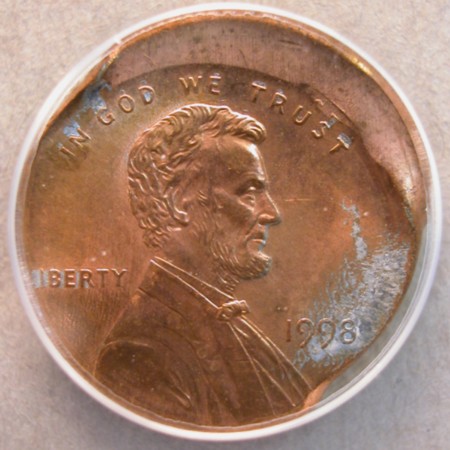
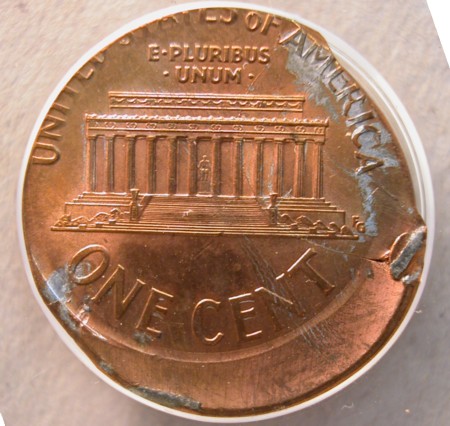
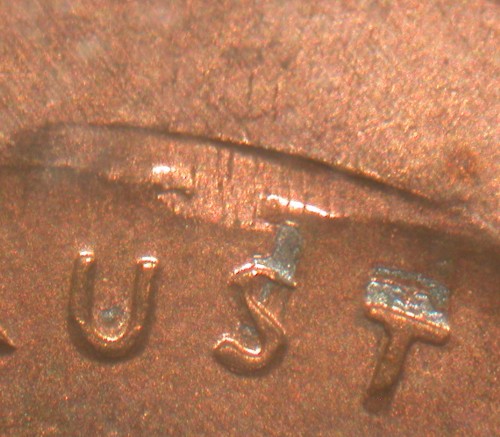
This 1998 cent started out as an edge strike. In other words, the planchet was struck while standing or spinning on-edge. The initial impact bent the planchet in the middle, but the planchet slipped before it could be folded over completely to form a foldover strike. As the hammer die’s downstroke continued, the bent planchet was supported at two points located at opposite poles on the planchet’s edge while the convex surface of the bend faced toward the hammer die. As the hammer die continued its descent, it contacted the apex of the bend, generating the upper parts of the letters “ST” (of TRUST). This brief impact caused the planchet to shift sideways, carrying these partial letters beyond the die face. The completion of the hammer die’s downstroke produced an off-center strike with an edge strike at 10:00 and a paraxial foldover strike at 4:00. That highly asymmetrical foldover strike takes the form of a flap of metal embedded in the reverse face.
This dime planchet entered the striking chamber with a long tear or fissure in it. One edge of the fissure rode over the other edge. The overlapping edges of the fissure were pressed against each other when the planchet was struck off-center. The initial impact of the reverse (anvil) die generated a partial set of letters (“ONE”) on the lower of the two telescoped surfaces. Increasing striking pressure caused the edges to flatten out and separate, carrying the partial letters beyond the edge of the anvil die. Completion of the strike generated a normal off-center strike above the partial letters. This off-center strike is also a chain strike.
